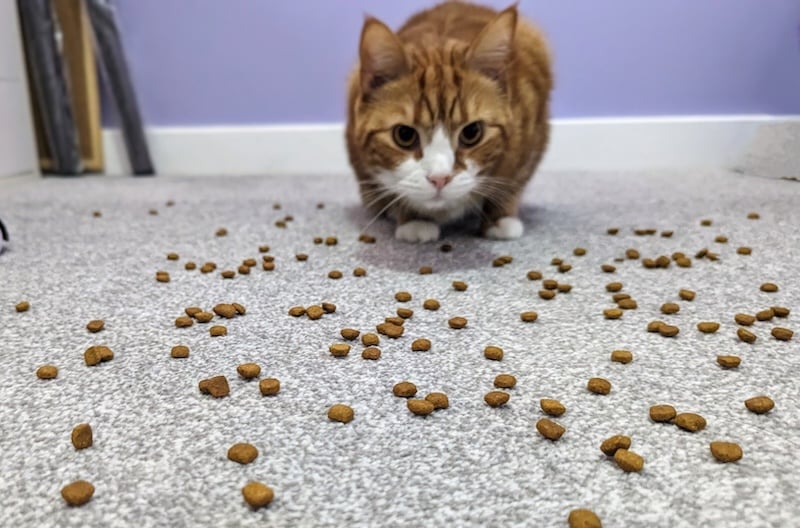Let’s talk about why cats can’t resist playing with packaging, and why they become obsessed with seemingly mundane household objects.
During the last Christmas season, I picked up a board game in a bid to vary the usual post-dinner routine of getting sucked into Netflix while slouching on the couch. The game is called Machi Koro, and it’s a Japanese cartoon-styled card-and-dice game that involves building a city for citizens who dream of nothing more than claiming a cheese factory in their municipality. (Let’s be honest, there really is no grander goal.)
Beyond the official game rules, I suspected that my cat, a bright domestic shorthair named Mimosa, might find fun in watching and pouncing on the two dice — after all, she has a previous history of impishly stealing jigsaw puzzle pieces — but Machi Koro held no allure for her. That is, until I noticed the game’s currency tokens had been packaged in a square piece of cardboard that was now filled with holes, sort of like a Connect Four board.

You guessed it: As soon as I tossed the packaging on the floor, Mims zoned in on it like it was the most fantastical new cat toy. Bending the cardboard in half doubled her fun: I threw a balled-up bit of paper underneath the impromptu contraption, and she whiled away a good hour of important cat time dipping her paws through the holes trying to retrieve it.
I’d happily bet that months from now, the Machi Koro cardboard is still on the apartment floor — along with various other crumpled receipts, pieces of crinkly presentation paper, and, of course, a classic cardboard box sitting smack in the middle of the kitchen.
That’s just how it is when you live with cats, especially once you realize that most times they prefer the packaging a toy came in over the plaything itself.
Staying with the betting theme, I’ll wager a month’s worth of kitty litter duties that if you asked your cat-owning friends what their felines like to play with, they’ll simply end up listing the contents of the household recycling bin (and maybe even the plastic receptacle itself).

Rolled-up pieces of paper often trump actual cat balls. Plastic bottle tops are a particular riot, especially if batted around on a smooth wooden floor. I had a friend whose cat, Gretel, became obsessed with water bottle tops to the point where it was discovered she’d hoarded a collection of them behind a living room armchair, all meticulously lined up in either a grand feat of feline geometry or an indicator of a cat flirting with an obsessive compulsive disorder.
In search of some deep meaning behind the way cats love to interact with all these seemingly mundane household objects, I consulted cat behavioral consultant Daniel “DQ” Quagliozzi from Go Cat Go in San Francisco.
“I think the average domestic cat is pretty bored,” Daniel said. “Most cat guardians underestimate the amount of interactive play a cat needs on a daily basis and fail to keep it real when they attempt to make an effort. So when something new is introduced, like a brand-new store-bought cat toy, the excitement starts the second the package is opened.”

Daniel adds that because some commercial cat toys fail to appeal to what he calls the “texture, weight, mouth feel, and sound that cats are looking for,” our now excitable feline pals quickly look for an alternative play thing — which most times ends up being the packaging of the toy.
So the next time it looks like your usually sophisticated kitty is making like a hobo cat and playing with something she dragged out of the recycling, pay attention — she’s really just showing you her ultimate Amazon wish list.




